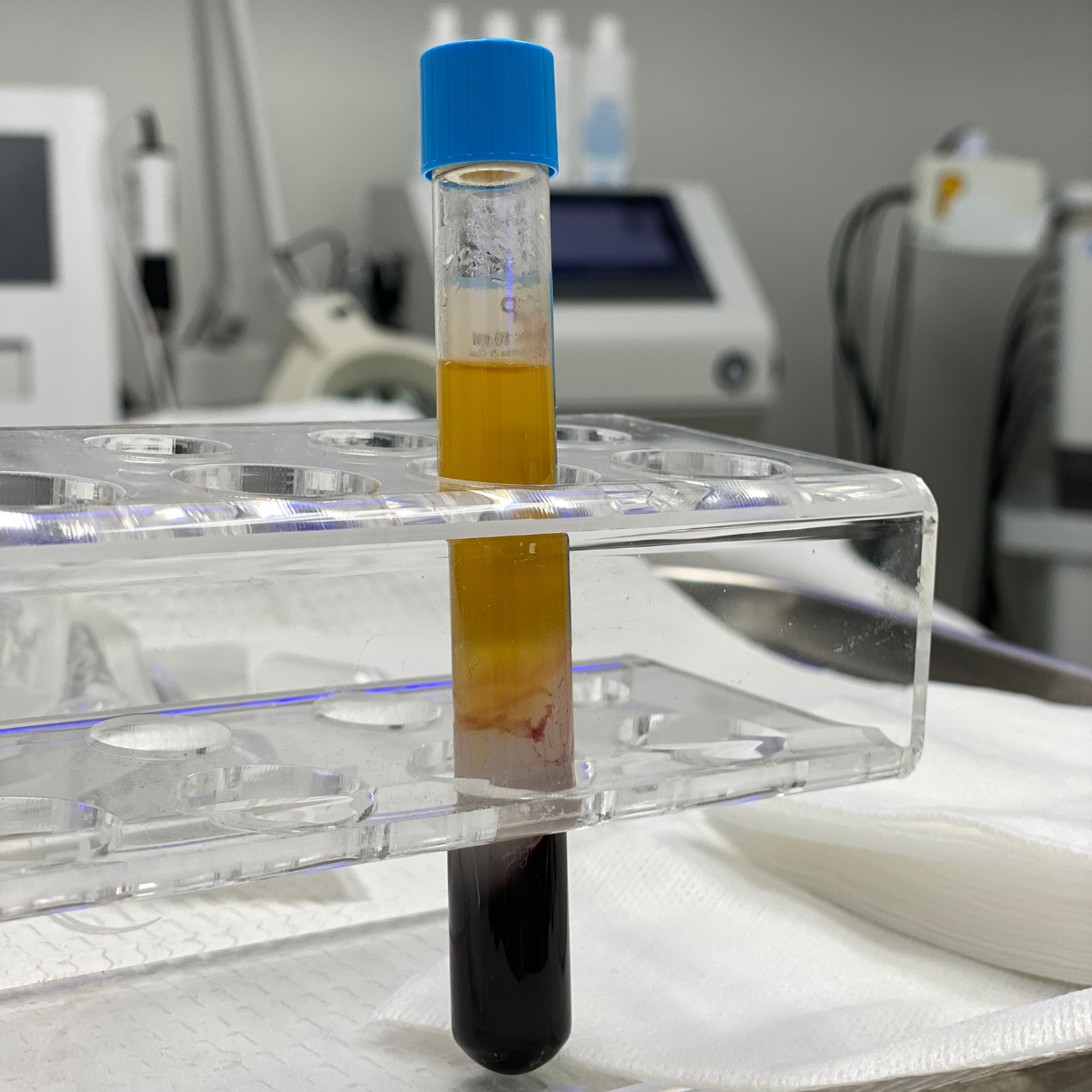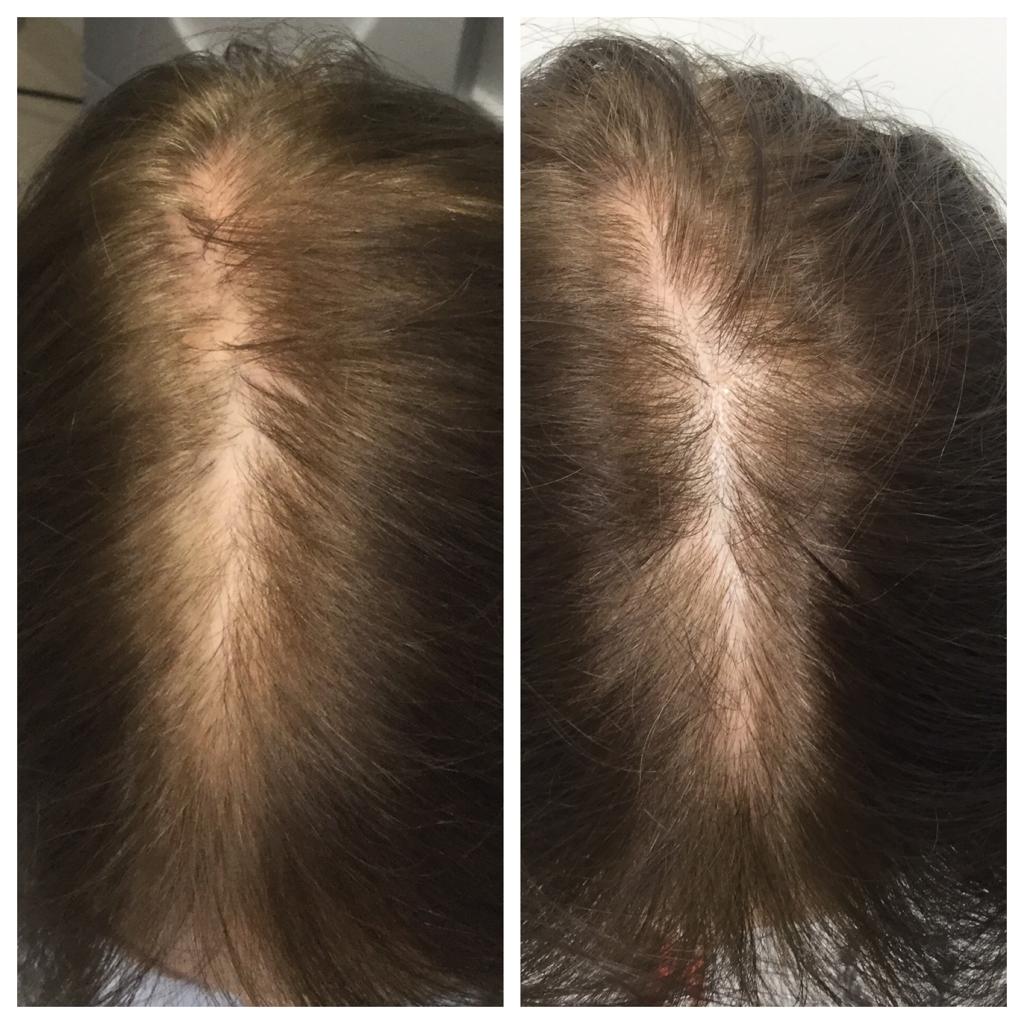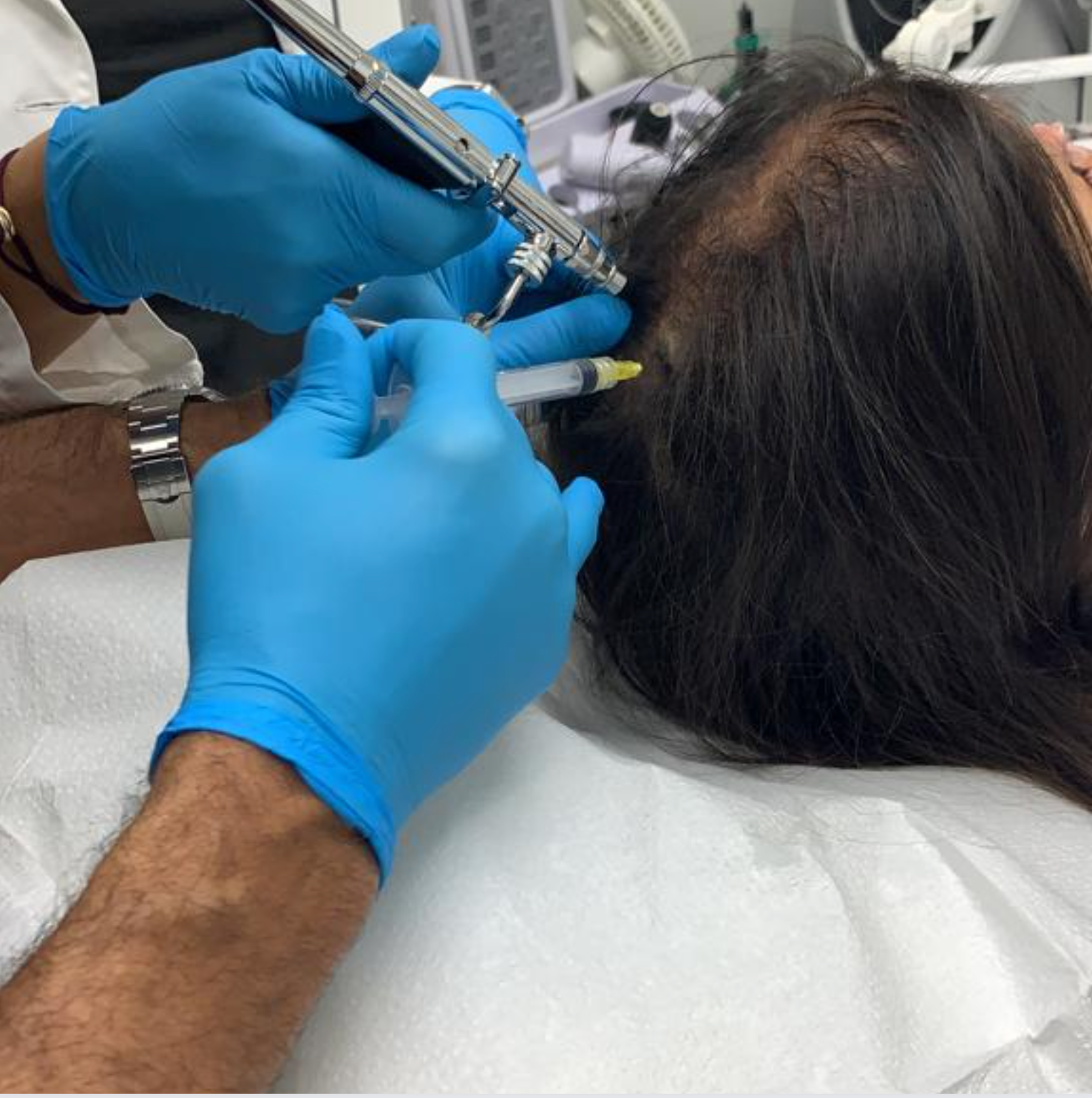PRP Hair Treatment & Hair Loss
Maria Lalinde Flores
$500.00
Please select all options.
💳 Book for $50 — this amount will be applied to your final treatment cost at checkout. Please note: bookings are non-refundable and ensure your spot is reserved.
Price on the website is only used as reference. Final price may vary after consultation.
Non-invasive solutions for hair restoration
PRP therapy for hair growth has become an innovative treatment for patients dealing with androgenic alopecia, (male-pattern hair loss), as well as female-pattern hair loss and thinning hair along the top of the head. Platelet rich plasma has been proven as an effective regenerative treatment for a myriad of health and wellness concerns, from orthopedics to endodontics to dermatology. PRP hair restoration is a safe, natural, and simple way to improve hair growth without the need for invasive surgery or downtime.
What is PRP hair treatment?
Platelet Rich Plasma (PRP) injections are a popular new and non-surgical method of hair loss treatment and hair restoration for women and men. What PRP does is use your own blood supply in a way that only the enriched cells that contain various types of proteins remain. During PRP injection treatment, a standard blood draw occurs. The blood is spun in a centrifuge in which the highly concentrated PRP is separated from the other components of the blood (such as red blood cells).
This platelet-rich plasma, which contains helpful white blood cells and platelets rich in growth factors, can then be injected into areas of the scalp that are experiencing hair loss, extreme hair shedding, or thinning hair.
What are the benefits of PRP therapy?
The Platelets in the PRP contain proteins that are needed in order to promote the rate of tissue healing and regeneration within inactive hair follicles. Inside these platelets are a variety of intracellular structures such as glycogen (a form of glucose), lysosomes (which break down the proteins), and alpha granules (which contain clotting and growth factors that get released during the cell repair process). Platelet-rich plasma-derived growth factors can also play a part in stem cell differentiation within the wound healing process of the musculoskeletal system.
In particular, the PRP specific cells that cause hair growth include:
- Platelet-Derived Growth Factor (PDGF): for blood vessel, cell and skin formation
- Vascular Endothelial Growth Factor (VEGF): For blood vessel formation
- Transforming Growth-Factor-Beta (TGF-b): For a growth matrix between cells, bone metabolism
- Epidermal Growth Factor (EGF): Cell growth, collagen and blood vessel formation
- Fibroblast Growth Factor-2 (FGF-2): Blood vessel and specialized cell growth
- Insulin Like Growth Factor-1 (IGF-1): Also known as Somatomedin C, a protein regulator of normal physiology in nearly every type of cell in the body and has anabolic effects in adults
PRP is a very modern procedure that has been used elsewhere as a method of healing injuries. It is often also used as a cosmetic treatment for the face too, and of course as a popular hair procedure for men and women.
Step-by-step:
- A special collection tube is used to draw your blood and is placed unto a centrifuge.
- After 10 minutes of centrifugation, the platelets are concentrated and drawn up into a syringe.
- Using a small needle, the platelets are then injected strategically into your scalp in the areas that need improvement.
Who is a Candidate?
A good candidate for PRP hair restoration is a patient who is showing signs of thinning hair or hair loss. Typically, candidates who have experienced hair loss more recently, or who are dealing with early hair loss, respond best to PRP hair treatment. Those with hair follicles that have been dormant for longer on the scalp are less likely to be improved by PRP therapy. It’s good to note that if you are diagnosed with a underlying disorder such as lupus or thyroid disease, you are unlikely to benefit form PRP injections, as these conditions will continue to worsen hair loss over time. Additionally, patients should not take blood thinners during PRP hair restoration treatment, as the procedure will be significantly less effective.
Want more information?
Contact us today: +1 (954)328-5886





